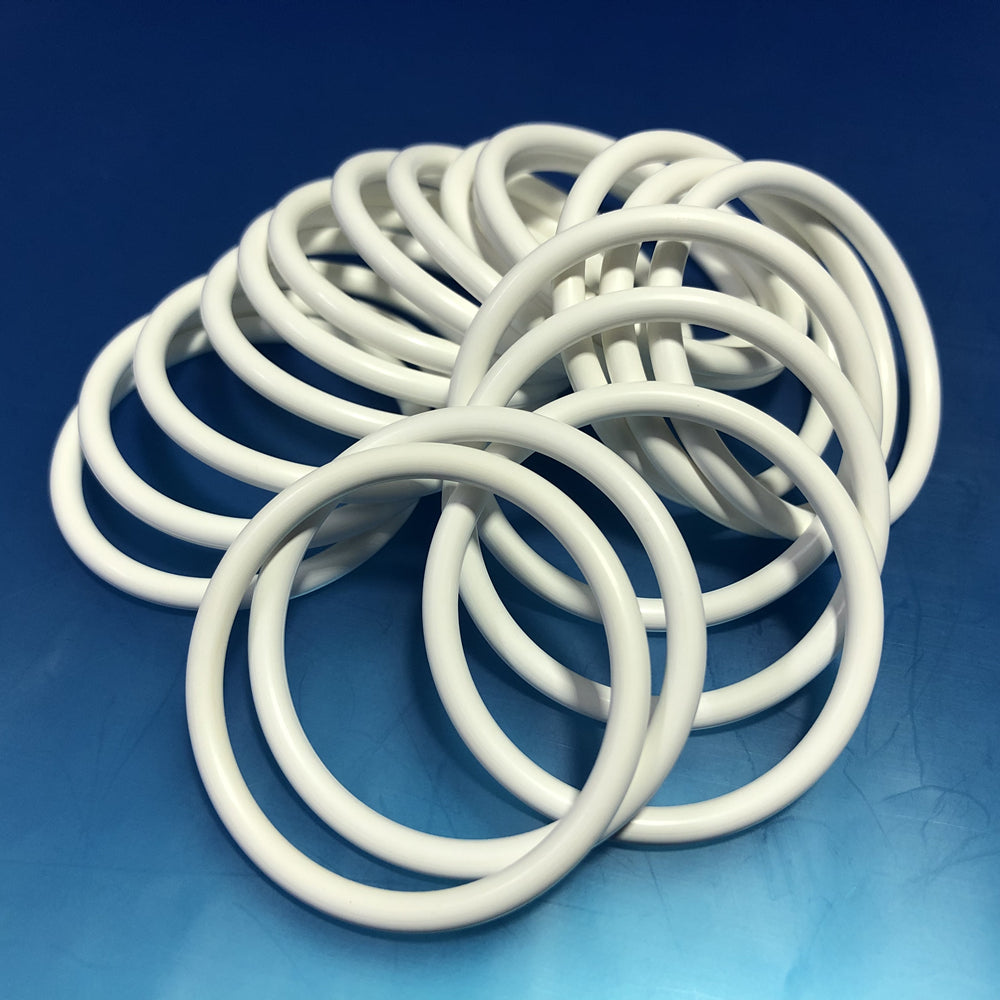Introduction: O-rings are a widely used sealing solution due to their versatility and effectiveness in preventing leakage in various applications. This article aims to provide a detailed overview of O-ring materials, highlighting their properties and discussing the wide range of industries where they find applications.
- Material Options: O-rings are available in different materials, each with its unique set of properties. Some commonly used materials include:
a. Nitrile (NBR): NBR O-rings offer excellent resistance to oils, fuels, and hydraulic fluids. They exhibit good abrasion resistance and are suitable for applications with operating temperatures ranging from -40°C to 120°C. NBR O-rings are widely used in automotive, industrial, and hydraulic systems.
b. Fluoroelastomer (FKM/FPM): FKM O-rings provide exceptional resistance to high temperatures, chemicals, and fuels. They can withstand temperatures ranging from -20°C to 250°C and exhibit excellent durability. FKM O-rings find applications in aerospace, automotive, oil and gas, and chemical processing industries.
c. Silicone (VMQ): VMQ O-rings offer excellent flexibility and low-temperature resistance, making them suitable for applications requiring sealing at extreme temperatures. They have a temperature range of -60°C to 230°C and are commonly used in food processing, medical devices, and electronics.
d. Ethylene Propylene Diene Monomer (EPDM): EPDM O-rings exhibit excellent weather resistance and are suitable for outdoor applications. They have a temperature range of -50°C to 150°C and are commonly used in water systems, HVAC, and automotive applications.
- Application Range: O-rings are utilized in a wide range of industries and applications, including:
a. Automotive: O-rings are found in engines, transmissions, fuel systems, and braking systems, ensuring proper sealing and preventing leaks.
b. Aerospace: O-rings play a critical role in aircraft engines, hydraulic systems, and fuel systems, where they provide reliable sealing in demanding conditions.
c. Chemical Processing: O-rings are used in pumps, valves, and pipelines in chemical plants to prevent leakage of corrosive chemicals and maintain process integrity.
d. Medical and Pharmaceutical: O-rings are employed in medical devices, drug delivery systems, and laboratory equipment, ensuring contamination-free and reliable sealing.
e. Food and Beverage: O-rings are used in food processing equipment and beverage dispensing systems, complying with food-grade regulations and maintaining hygienic sealing.
f. Electronics: O-rings find applications in electronic devices, providing sealing against moisture and environmental contaminants.
Conclusion: O-rings are versatile sealing solutions available in a range of materials to suit various applications. The choice of material depends on factors such as temperature, chemical resistance, and industry requirements. Whether it's sealing fluids, gases, or preventing environmental contamination, O-rings play a crucial role in ensuring reliable and effective sealing across industries such as automotive, aerospace, chemical processing, and more.

